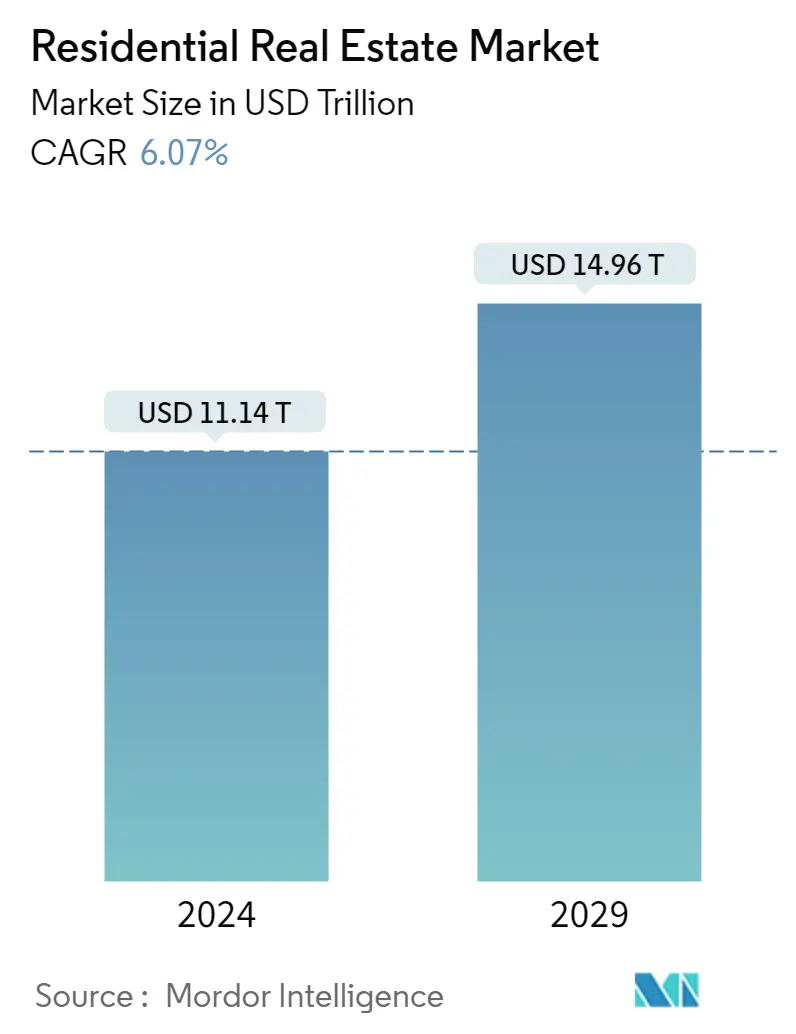Market Size of Residential Real Estate Industry

| Study Period | 2019 - 2028 |
| Market Size (2023) | USD 10.5 Trillion |
| Market Size (2028) | USD 14.10 Trillion |
| CAGR (2023 - 2028) | 6.07 % |
| Fastest Growing Market | Asia-Pacific |
| Largest Market | Asia-Pacific |
Major Players
*Disclaimer: Major Players sorted in no particular order |
Need a report that reflects how COVID-19 has impacted this market and its growth?
Residential Real Estate Market Analysis
The Residential Real Estate Market size is expected to grow from USD 10.50 trillion in 2023 to USD 14.10 trillion by 2028, at a CAGR of 6.07% during the forecast period (2023-2028).
The residential real estate (RRE) markets were impacted by the COVID-19 pandemic in several ways. On the one hand, lockdowns and the increased use of remote working practices are expected to increase the demand for RRE, and accommodative monetary policies are anticipated to improve its affordability. The economic downturn and increases in unemployment are expected to weigh negatively on demand. Due to lockdowns, most of the construction activity and property transactions came to a halt during the pandemic. In 2021, as soon as the lockdown relaxation took place, the residential real estate market surged.
The residential real estate market is the cornerstone of the well-being of any economy. Shelter is considered a basic need for humans and lies at the base of the famous hierarchy of needs pyramid (Maslow). Therefore, it is understood that the manner in which the residential real estate market moves has a rippling effect on people around the world.
Residential properties such as apartments, bungalows, and villas are bought and sold on the market. The residential real estate market in emerging nations is mostly driven by urbanization. Major cities in emerging nations such as India, China, Brazil, Argentina, and South Africa are fast expanding and require additional housing to accommodate people migrating from various regions of the country.
Furthermore, government measures promoting affordable housing stimulate market expansion. For example, governments in Australia, the United States, and Canada have planned strategies such as concessions for first-time buyers, veterans' subsidies, a golden visa, low-cost affordable housing schemes, and a reduction in transactional taxes, all of which are expected to boost growth in the residential real estate market. Even the low mortgage interest rates are fueling the residential real estate market in countries like the United States, Canada, India, and Australia.
